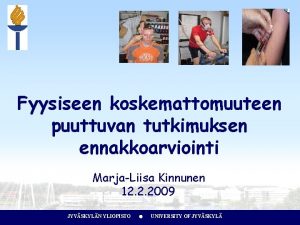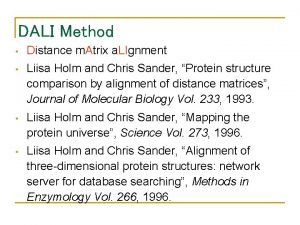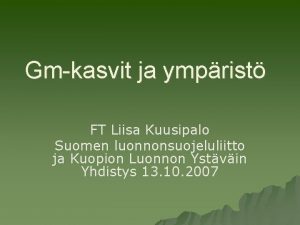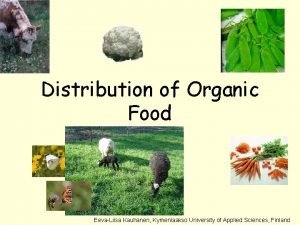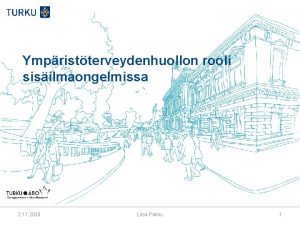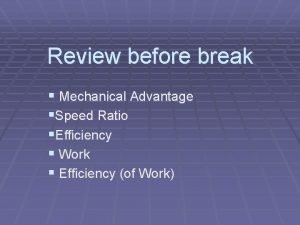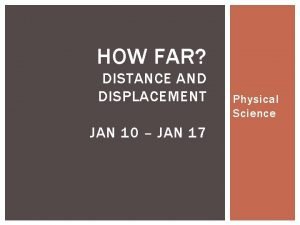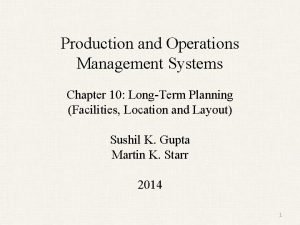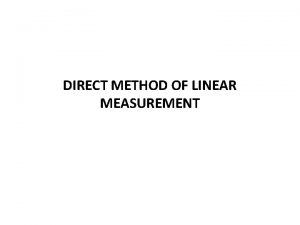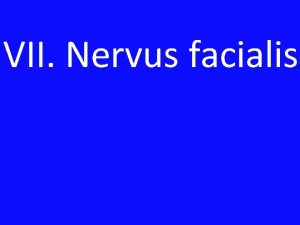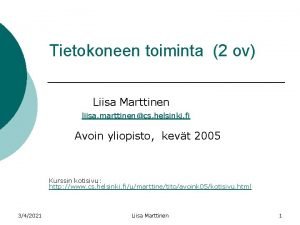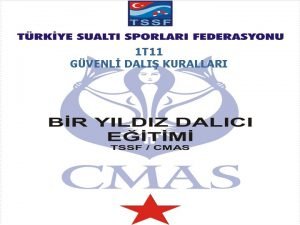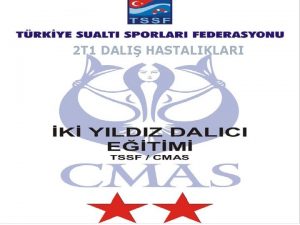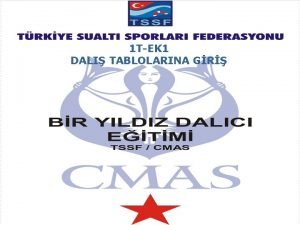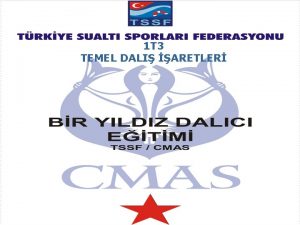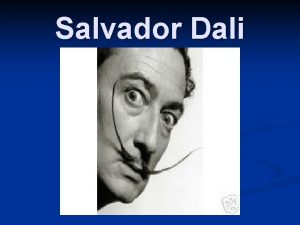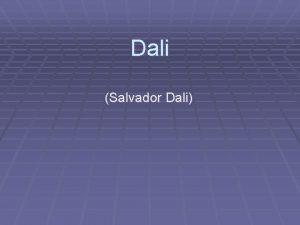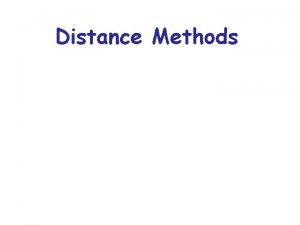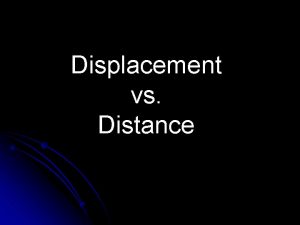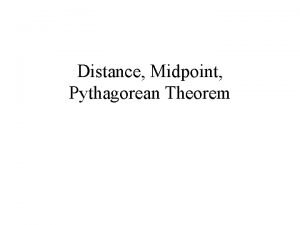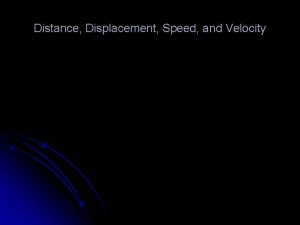DALI Method Distance m Atrix a LIgnment Liisa

































- Slides: 33

DALI Method • Distance m. Atrix a. LIgnment • Liisa Holm and Chris Sander, “Protein structure comparison by alignment of distance matrices”, Journal of Molecular Biology Vol. 233, 1993. • Liisa Holm and Chris Sander, “Mapping the protein universe”, Science Vol. 273, 1996. • Liisa Holm and Chris Sander, “Alignment of three-dimensional protein structures: network server for database searching”, Methods in Enzymology Vol. 266, 1996.

How DALI Works? • • Based on fact: similar 3 D structures have similar intra-molecular distances. Background idea • • Represent each protein as a 2 D matrix storing intramolecular distance. Place one matrix on top of another and slide vertically and horizontally – until a common the sub-matrix with the best match is found. Protein A • Protein B Actual implementation • • • Break each matrix into small sub-matrices of fixed size. Pair-up similar sub-matrices (one from each protein). Assemble the sub-matrix pairs to get the overall alignment.

Structure Representation of DALI • 3 D shape is described with a distance matrix which stores all intra-molecular distances between the Cα atoms. • Distance matrix is independent of coordinate frame. • Contains enough information to re-construct the 3 D coordinates. Protein A Distance matrix for Protein A 1 2 3 4 1 0 d 12 d 13 d 14 2 d 12 0 d 23 d 24 3 d 13 d 23 0 d 34 4 d 14 d 24 d 34 0 Distance matrix for 2 drp. A and 1 bbo

Intra-molecular distance for myoglobin

DALI Algorithm 1. Decompose distance matrix into elementary contact patterns (sub-matrices of fixed size) • Use hexapeptide-hexapeptide contact patterns. 2. Compare contact patterns (pair-wise), and store the matching pairs in pair list. 3. Assemble pairs in the correct order to yield the overall alignment.

Assembly of Alignments • Non-trivial combinatory problem. • Assembled in the manner (AB) – (A’B’), (BC) – (B’C’), . . . (i. e. , having one overlapping segment with the previous alignment) • Available Alignment Methods: • Monte Carlo optimization • Brach-and-bound • Neighbor walk

Schematic View of DALI Algorithm 3 D (Spatial) (Sequence) 2 D (Distance Matrix) 1 D

Monte Carlo Optimization • • Used in the earlier versions of DALI. Algorithm • • Compute a similarity score for the current alignment. Make a random trial change to the current alignment (adding a new pair or deleting an existing pair). Compute the change in the score ( S). If S > 0, the move is always accepted. If S <= 0, the move may be accepted by the probability exp(β * S), where β is a parameter. Once a move is accepted, the change in the alignment becomes permanent. This procedure is iterated until there is no further change in the score, i. e. , the system is converged.

Branch-and-bound method • Used in the later versions of DALI. • Based on Lathrop and Smith’s (1996) threading (sequencestructure alignment) algorithm. • Solution space consists of all possible placements of residues in protein A relative to the segment of residues of protein B. • The algorithm recursively split the solution space that yields the highest upper bound of the similarity score until there is a single alignment trace left.

LOCK • • Uses a hierarchical approach Larger secondary structures such as helixes and strands are represented using vectors and dealt with first Atoms are dealt with afterwards Assumes large secondary structures provide most stability and function to a protein, and are most likely to be preserved during evolution

LOCK (Contd. ) • Key algorithm steps: 1. 2. 3. 4. • Represent secondary structures as vectors Obtain initial superposition by computing local alignment of the secondary structure vectors (using dynamic programming) Compute atomic superposition by performing a greedy search to try to minimize root mean square deviation (a RMS distance measure) between pairs of nearest atoms from the two proteins Identify “core” (well aligned) atoms and try to improve their superposition (possibly at the cost of degrading superposition of non-core atoms) Steps 2, 3, and 4 require iteration at each step

Alignment of SSEs • • • Define an orientation-dependent score and an orientationindependent score between SSE vectors. For every pair of query vectors, find all pairs of vectors in database protein that align with a score above a threshold. Two of these vectors must be adjacent. Use orientation independent scores. For each set of four vectors from previous step, find the transformation minimizing rmsd. Apply this transformation to the query. Run dynamic programming using both orientation-dependent and orientation-independent scores to find the best local alignment. Compute and apply the transformation from the best local alignment. Superpose in order to minimize rmsd.

Atomic superposition Loop • • • find matching pairs of Ca atoms use only those within 3 A find best alignment until rmsd does not change

Core identification Loop • • • find the best core (symmetric nns) and align; remove the rest until rmsd does not change

VAST • • • Begin with a set of nodes (a, x) where SSEs a and x are of the same type Add an edge between (a, x) and (b, y) if angle and distance between (a, b) is same as between (x, y) Find the maximal clique in this graph; this forms the initial SSE alignment Extend the initial alignment to Ca atoms using Gibbs sampling Report statistics on this match

Quality of a structure match • • • Statistical theory similar to BLAST Compare the likelihood of a match as compared to a random match Less agreement regarding score matrix • z-scores of CE, DALI, and VAST may not be compatible

Protein Structure Classification • Protein structure classification • • CATH SCOP FSSP Up-to-date view of the protein structure universe • • SCOP is updated every six months. Determining SCOP classifications of protein structures automatically as they are published in Protein Data Bank (PDB).

Problem definition SCOP Classification root new protein structure class fold superfamily ? fold family ? family

Two problems • Class membership? • • Does the query protein belong to a SCOP category? Or does it need a new category to be defined? Binary classification problem: • • member, non-member Class label assignment? • • What SCOP category is the query protein assigned to? Multi-classification problem

Hierarchical classification • Let p be a protein structure, proceed bottomup from family level to fold level: yes Does p belong to a family? report family no yes Does p belong to a superfamily? report superfamily no Does p belong to a fold? no new fold yes report fold

Component classifiers • Using a sequence/structure comparison tool as a classifier • • Perform a nearest neighbor query: if similarity. Score(query, NN) < trained cutoff then not a member of any category else member of class(NN) Comparison tools we have used: Sequence: PSI-Blast, HMMER+SUPERFAMILY database Structure: CE, Dali, Vast

Performance of component classifiers • • Database: SCOP 1. 59 Query: SCOP 1. 61 – SCOP 1. 59 Class membership family HMM BLAST CE Dali Vast At least one 94. 5% 92. 6% 89% 89% 98. 2% superfamily 78. 6% 66. 1% 72. 2% 77. 6% 78. 4% fold 73% 60. 7% 78. 5% 82% 85% 96% 100%

Performance of component classifiers • • Database: SCOP 1. 59 Query: SCOP 1. 61 – SCOP 1. 59 Class label assignment family HMM BLAST CE Dali Vast At least one 94. 8% 92. 3% 91% 88% 92% 97. 9% superfamily 69% fold 40. 5% 12% 0% 81% 80. 4% 81. 7% 40. 5% 46% 54% 93. 9% 64. 9%

Normalization of similarity scores • • Universal confidence levels instead of toolspecific scores Perform nearest neighbor queries • • • Database: SCOP 1. 59 Query: SCOP 1. 61 – SCOP 1. 59 Partition score space of tools into confidence levels • e. g. CE z-score of 5. 4 we are 80% confident that the query protein is a member of an existing fold.

Consensus Decision • Each component classifier reports a confidence level for the query protein: • • c = [C 1, C 2, C 3, C 4, C 5] What is the best way to combine these probabilistic decisions? • • A solution: decision trees. Decision trees: • • Attribute order? Branching factor?

Proposed decision tree structure < θ 1 1 C 1 else L 1 > θ 2 1 L 2 C 2 < θ 1 2 > θ 2 2 else Cn L 1 < θ 1 n L 1 L 2 > θ 2 n L 2

Determination of Cis and θjis • Automated • • Generate all possible trees of height 3 and Cis as sum rules of up to 3 components. Determine θjis using a greedy optimization that minimizes impurities of nodes level by level. Disadvantage: overfits the data Manual • • Determine Cis by examining individual component’s performances Determine θjis considering two levels of the tree simultaneously and considering only the values between score clusters to avoid overfitting.

decision tree: superfamily level < 45% Vast? > 93% else new superfamily existing superfamily HMM? < 40% > 75% else new superfamily < 55% new superfamily existing superfamily CE+Dali? >= 55% existing superfamily

Experimental evaluation • The dataset: Training Evaluation Database v 1. 59 (20449) v 1. 61 (22724) Query v 1. 61 – v 1. 59 (2241) v 1. 63 – v 1. 59 (2825) new family 248 618 new superfamily 84 424 new fold 47 339

Training: class membership

Testing: class membership

Training: class label assignment

Testing: class label assignment
 Eeva-liisa tuovinen
Eeva-liisa tuovinen Liisa mällo
Liisa mällo Sangviinik
Sangviinik Liisa tupits
Liisa tupits Liisa rantaniemi
Liisa rantaniemi Liza langa
Liza langa Matriisiorganisaatio
Matriisiorganisaatio Maia-liisa anton
Maia-liisa anton Vsshp eettinen toimikunta
Vsshp eettinen toimikunta Liisa ots
Liisa ots Liisa palmu
Liisa palmu Virva-liisa pekkarinen
Virva-liisa pekkarinen Aliis udras
Aliis udras Liisa kuusipalo
Liisa kuusipalo Sirkka-liisa varjus
Sirkka-liisa varjus Miina-liisa värelä
Miina-liisa värelä Eeva-liisa kauhanen
Eeva-liisa kauhanen Liisa palmu
Liisa palmu Yrittäjyyskasvatus
Yrittäjyyskasvatus Liisa uusitalo-arola webinaari
Liisa uusitalo-arola webinaari Jana liisa johannson
Jana liisa johannson The ratio of input distance to output distance
The ratio of input distance to output distance Difference between distance and displacement
Difference between distance and displacement Symposium is a type of which method
Symposium is a type of which method Load distance method
Load distance method Methods of judging distance in ncc
Methods of judging distance in ncc Facility capacity planning
Facility capacity planning Load distance method example
Load distance method example Center of gravity method
Center of gravity method When injuries make the firefighter carry unsafe
When injuries make the firefighter carry unsafe Direct method of distance measurement
Direct method of distance measurement Dali bekabeling
Dali bekabeling Sulcus bulbopontinus kranial sinirler
Sulcus bulbopontinus kranial sinirler Gestin ins salvador dali
Gestin ins salvador dali








